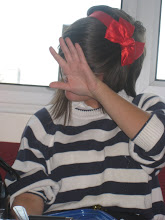The idea of the 'EXPANDED CITY' is to create, develop, test and evaluate an urban interaction. Our place of study would be Bradford but we tested our own 'game' in Leeds, putting together instructions for another group.
'Expanded Cinema'. Gene Young Bloods' term from 1970, was coined as a name for new forms of artistic experimentation with the language of film. The EXPANDED CITY brief extends the concept of expanded media. The city becomes a metaphor for shared space...for exchange and communication. (An exciting way of exploring Bradford). Options for creating a game were... Psycho-geography, Role Play, Transport Networks, Signs/Symbols and Time based gaming.
Ideas the group came up with...
- Mapping out a random walk in Bradford and asking a group to photograph places you wouldn't normally go to, photographing/annotating what drew you to it and why you wouldn't walk there.
Also having a tourist approach an getting people to photograph you in places.
The game my group created we named 'FETCH'.
The aim of our project is to force a group of people to explore a city (Bradford), by having to find certain items and photographing the journey along the way. they will also mark their journey and the places they found each item on a map. Finally they will make a sculpture depicting the city or their feelings about the journey with the items and pictures found.
Here is our list of items...along with a few photos we took when we did it ourselves...




After this we all had to Geotag our maps and task. Geotagging is the process of adding geographical identification, to various media such as photographs, video, websites. They can consist of longitude and latitude co-ordinates but it can also include altitude, bearing, accuracy data, and place names.
The place names is the one that most of the groups used in order to sho where they'd been and where they'd found what photos. Geotagging is a good and fast easy way to document where you've been and look back at it.



















































